Demand Generation vs Growth Marketing: Where to focus?
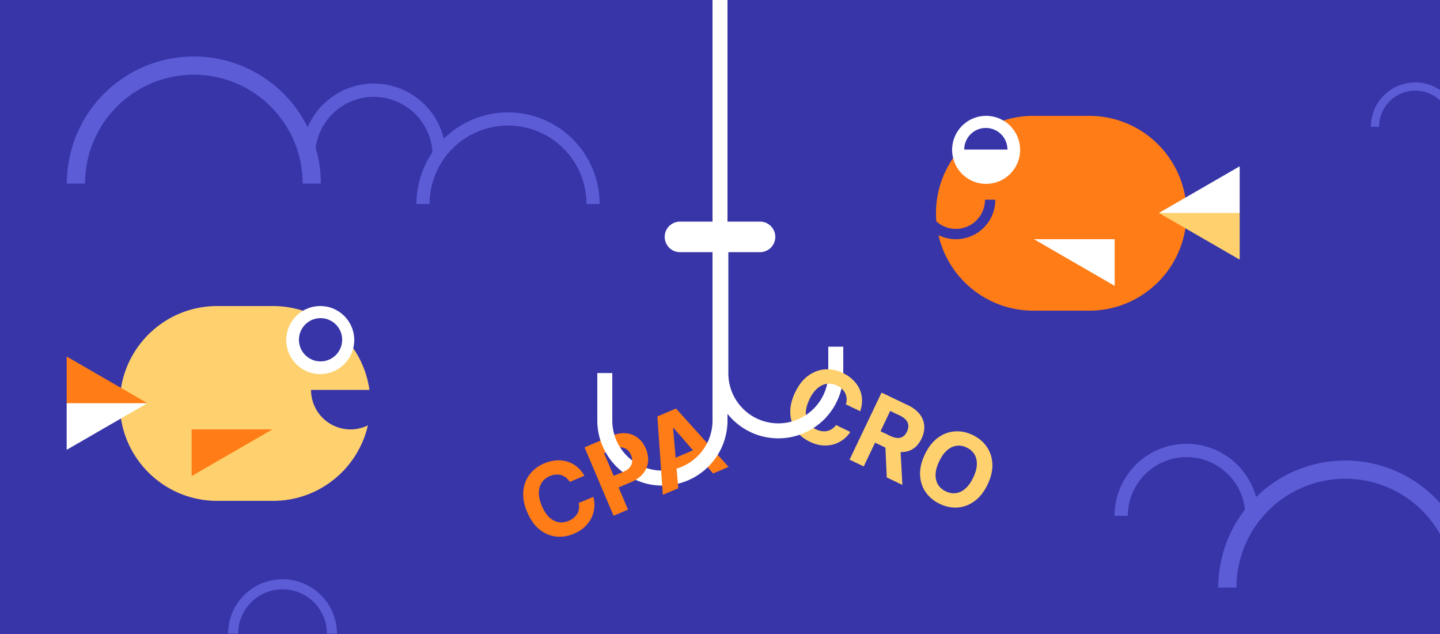
It’s an ongoing debate in the marketing world: growth marketing vs demand generation. Where is your time, effort, and budget best spent? Both play pivotal roles in growing a business, but they serve distinct purposes and employ different tactics. As businesses navigate the landscape of today’s digital marketing, understanding the distinction is crucial in making strategic decisions.
In this article, we will peel back the layers of “Demand Generation vs Growth Marketing: Where to Focus?” We’ll explore what each strategy encompasses, their differences, benefits, and overlaps.
By shedding light on growth marketing and demand generation, we aim to provide a clear perspective to help marketers identify where to focus their energies for the best results. Let’s delve into the underpinnings of an effective modern marketing strategy.
What is growth marketing?
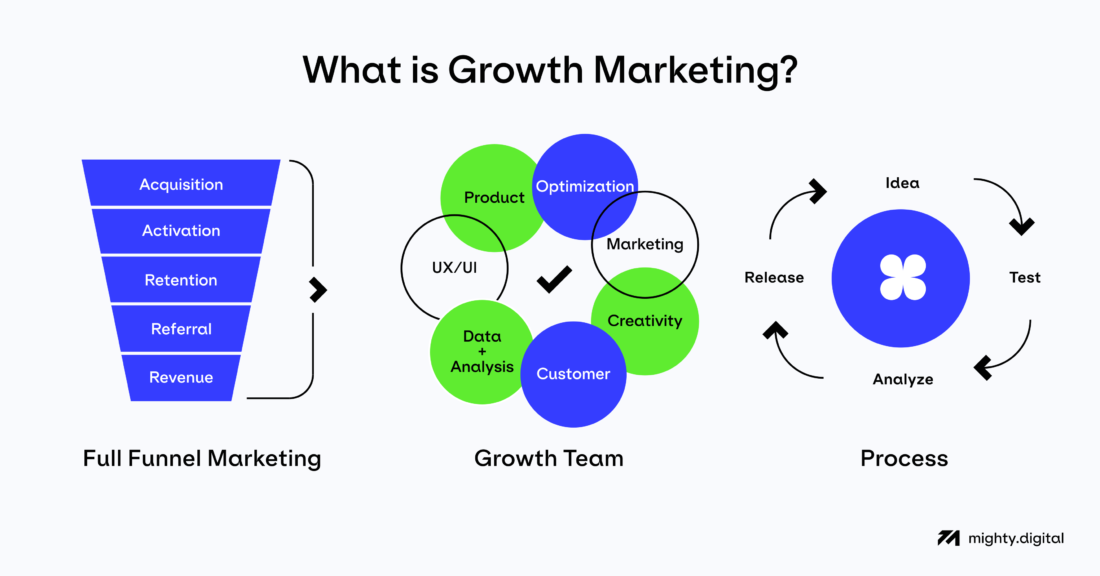
Growth marketing is a strategy wherein various innovative, data-driven approaches are used to create a sustainable customer led growth.
This robust marketing approach is multi-faceted. Instead of focusing solely on the top of the funnel, it considers every element of the customer journey — from acquiring new customers to retaining existing ones.
For example:

Airbnb’s referral program is a perfect example of growth marketing strategy. They incentivize both the sender and the receiver of the referral. When a referred friend completes their first stay or experience, the referrer receives travel credit.
This strategy created a win-win situation, doubling bookings in some markets. By focusing on the entire customer journey, Airbnb was able to stimulate growth and customer retention using this referral marketing program.
What is demand generation?
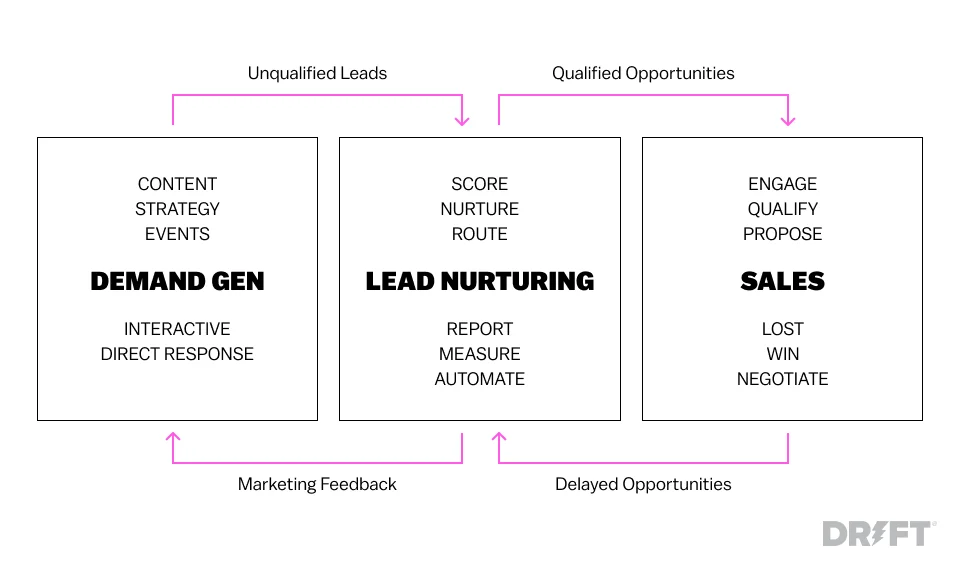
Demand generation, in essence, is a systematic marketing approach used to cultivate interest and brand awareness.
It employs targeted marketing programs such as email marketing, events, content syndication, paid advertising and more to not only generate initial consumer interest but also guide potential consumers along the journey of product discovery to eventual purchase.
It’s essentially about creating a base for your product led growth marketing efforts, followed by capturing and nurturing these leads successfully until they convert into customers.
For example:
HubSpot, a leading customer relationship management (CRM) platform, employed content marketing as their primary demand generation strategy. They created a comprehensive assortment of free, valuable content like blogs, webinars, growth marketing tools, e-books, and courses targeting digital marketers and sales people.
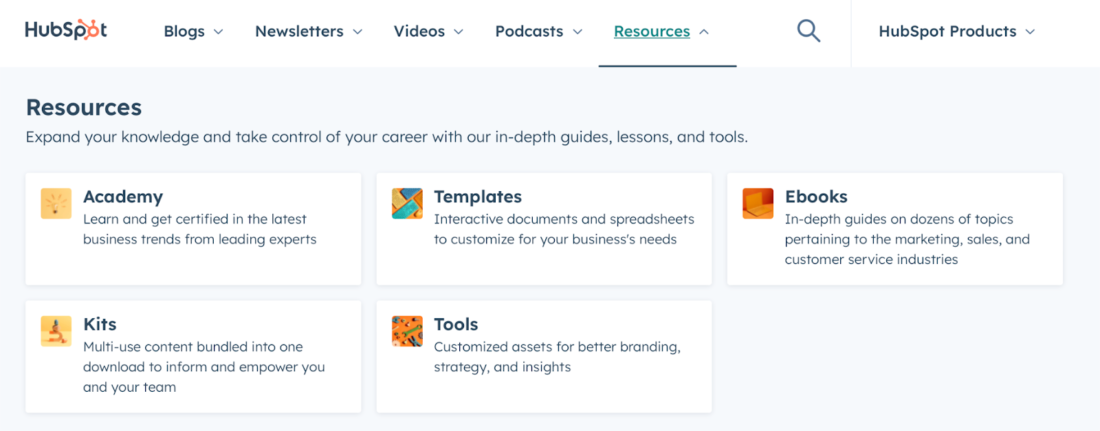
This content fuels their inbound marketing strategy, drawing potential customers onto their website. Each content piece ends with a call to action, usually to download another more advanced free piece of content, but the user must provide their contact details which can later be used for lead nurturing.
This strategy has successfully positioned HubSpot as an industry thought leader and helped them generate a substantial lead volume.
Benefits of growth marketing and demand generation
Growth Marketing
Demand Generation
— Full Funnel Focus: Growth marketing strategies aim to optimize every stage of the customer journey, from acquisition to retention and referral.
— Data Oriented: It uses data to understand user behavior and guide strategic decisions, allowing for better insights and effective strategies.
— Holistic Perspective: It considers all possible touchpoints a customer has with a brand, allowing for a more coordinated and seamless customer experience.
— Long-term Growth: By focusing on customer retention and referral as much as initial acquisition, growth marketing fosters sustainable, long-term growth.
— Creates Awareness and Interest: Demand generation effectively increases brand visibility and engages potential customers, creating interest in a company’s products or services.
— Generates Qualified Leads: By creating informative content catered to a specific target market, it attracts and nurtures high-quality leads that are more likely to convert.
— Builds Strong Brand Preference: By demonstrating value through various targeted marketing strategies, it helps to establish a strong brand preference among potential customers.
— Boosts Revenue: Successful demand generation strategies nurture leads through the funnel, thereby boosting sales and increasing revenue.
In conclusion, while growth marketing encompasses a holistic approach to sustainable business growth, demand generation focus on sparking interest and driving awareness to generate leads. Both methodologies contribute significant value to a comprehensive marketing strategy.
Growth marketing vs demand generation goals
While growth marketing focuses on the bigger picture of improving the entire customer journey and driving overall growth, demand generation zooms in on the upper-funnel activities, mainly focusing on attracting and guiding ideal prospects through the path to becoming a customer. Both have key roles to play in a well-rounded marketing strategy.
Growth approach
Demand Generation
— Optimize the Full Customer Journey: Growth marketing aims to optimize every stage of the customer journey, thereby maximizing customer lifetime value.
— Increase User Base: The primary aim is to expand the user base by acquiring new customers, retaining existing ones, and turning them into advocates.
— Improve Customer Retention: Growth marketing strategies focus on keeping customers loyal to the service or product, effectively reducing the churn rate.
— Drive Sustainable Growth: The ultimate goal is to stimulate sustainable growth for the organization, which encompasses more than just short-term revenue increments.
— Create Brand Awareness: The main goal of demand generation is to generate awareness and interest in a company’s offerings, thereby setting the stage for customer acquisition.
— Generate Qualified Leads: Implementing strategies to attract potential customers that match the ideal customer profile, thus improving lead quality.
— Nurture Leads into Customers: Demand generation focuses on nurturing leads through successful conversion paths to result in a sale.
— Boost Sales and Revenue: By effectively guiding leads to conversion, demand generation aims to increase sales and boost the company’s revenue.
Free expert insights to boost your marketing strategy and raise conversion to a target action by 10%

Tasks of demand gen and marketing growth teams
In any organization, the significance of both demand generation and growth marketing team cannot be overstated. Both play crucial roles in driving business growth and are marked by a set of unique tasks that help achieve their respective goals.
The demand generation team primarily focuses on creating awareness, attracting potential leads, and nurturing them down the funnel. Meanwhile, the growth team adopts a comprehensive approach, optimizing every aspect of the customer’s journey with the organization, from acquisition to retention.
Let’s dive into a detailed breakdown of the specific tasks that each team typically handles.
Growth Marketing
Demand Generation
— Marketing Funnel Optimization: Constantly evaluate and optimize each stage of the marketing and sales funnel to ensure smooth customer journey.
— A/B Testing: Regularly conduct A/B testing to optimize the performance of various elements such as landing pages, email campaigns, ad copies and more.
— Growth marketing analytics: Rigorously analyze customer data to gain insights into customer behavior and preferences.
— Customer Retention Strategies: Develop programs or initiatives aimed at improving customer satisfaction and retention rates.
— Product Development: Work in collaboration with product teams towards feature development and enhancement based on user feedback and analysis.
— Content Creation: Generate engaging and SEO-optimized content that attracts and educates the target audience and encourages them to make a purchase.
— Lead Generation: Implement strategies to attract and acquire qualified leads.
— Lead Nurturing: Develop and manage email campaigns or other ways of communication to nurture leads, moving them down the sales funnel to encourage conversion.
— Performance Measurement: Analyze and track the success and effectiveness of demand gen campaigns using key product metrics framework KPIs such as leads generated, conversion rates, revenue attributed etc.
— Collaboration with Sales Team: Coordinate with the sales team to ensure a lead is qualified and handled correctly for a successful conversion.
Team structure difference
Growth Marketing
Demand Generation
— Growth Manager/Head of Growth: They oversee the overall strategy and execution of growth initiatives and work closely with product, sales, and marketing teams to drive growth and retention metrics.
— Data Analyst: They play a critical role in deciphering user behavior through data, which directly influences the growth strategies.
— Product Marketers: They work to identify potential areas of growth within the product range, and run campaigns aimed at increasing user engagement and retention.
— Growth Hackers/Marketers: They carry out innovative, experiment-driven marketing strategies with a growth-first focus. A/B testing, SEO, content marketing, and social media are often components of their realm.
— UX/UI Designers: Their role is to ensure optimal user experience across all customer touchpoints, helping to drive engagement and retention.
— Demand Generation Manager: They lead the team and strategize the demand generation campaigns. They are often responsible for creating and managing the budget and ensuring the demand generation strategies align with the sales goals.
— Content Creators: This group, often consisting of writers and designers, creates engaging content aimed at informing potential leads about the company’s products or services, lead gen, and influencing their buying decisions.
— Digital Marketers: They manage different ad campaigns, SEO, PPC and other digital initiatives to drive traffic and visibility towards the content and convert viewers into leads.
— Marketing Automation Specialist: They implement and manage marketing automation platforms to streamline and measure the effectiveness of campaigns and ensure leads are nurtured through the sales funnel.
These are key difference of growth marketing and demand generation. Remember, team structure can vary depending on the size and nature of individual organizations. Smaller companies might see these roles merged or divided up differently, while larger enterprises might have individual teams for each task.
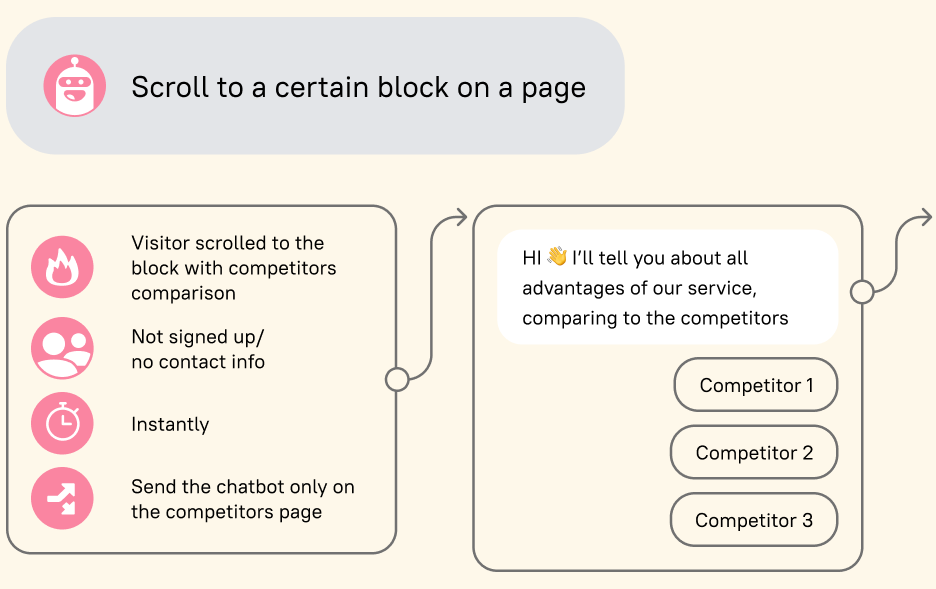
Get your free example of a growth marketing playbook with 40+ templates for successful experiments
Pipeline of demand generation vs. growth team
Growth approach
Demand Generation
Unlike the Demand Generation pipeline, the smart growth pipeline covers a broader scope that includes every aspect of the customer lifecycle, from acquisition to advocacy:
- User Acquisition: Drive traffic to your business through a variety of channels, aiming to convert visitors into users.
- Activation: Encourage users to take meaningful and desired actions on your platform.
- Engagement: Strive for pulling users to interact with your product regularly, boosting user experience and product value.
- Monetization: Find ways to deepen the relationship with customers and increase revenue, typically through up-selling or cross-selling.
- Retention: Implement strategies to keep churn at a minimum, making customers stay longer.
- Advocacy: Delight users to the point where they start promoting your brand to others, turning customers into advocates.
The Demand pipeline is characterized by a series of steps designed to cultivate interest and engage potential customers as follows:
- Creating Awareness: Increase visibility through targeted content, advertising, events, and more.
- Generating Interest: Engage your audience with compelling and valuable content related to, for example, your product or growth marketing services.
- Capturing Information: Use registration forms, landing pages, or gated content as a source of contact information from interested individuals.
- Nurture Leads: Follow up with personalized and targeted communications to guide potential customers toward readiness to buy.
- Turning Leads Into Customers: At the end of the pipeline, Sales take over, using the warm leads generated by Marketing to close the deal.
So, growth marketing and demand generation pipeline differ. Demand’s key focus is more upfront, targeting brand visibility and lead attracting, while growth marketing encompasses the whole customer’s journey, aiming for a complete funnel optimization.
Thanks! Here’s your copy of the growth strategy template
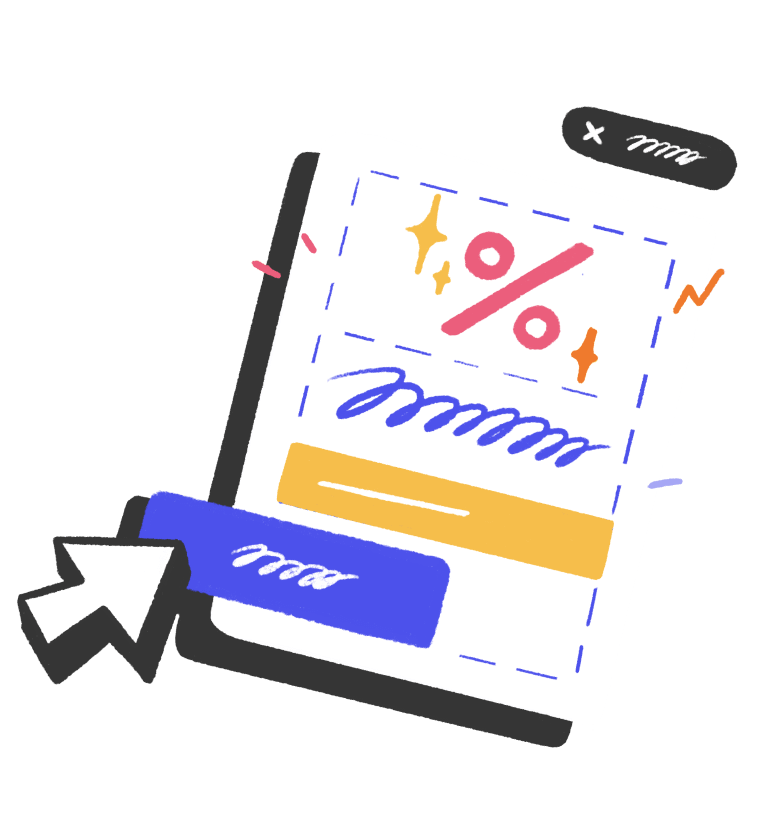
Channels growth marketing and demand generation teams use
Growth team
Demand Gen team
Product/In-App Marketing: Crafting in-app messages, notifications, and emails that encourage user engagement and retention.
A/B Testing: Testing different versions of website elements, ads, emails, etc. to identify the combination that produces the best results.
Referral Programs: Encouraging users to refer friends or colleagues to the product or service, often in exchange for rewards.
Social Media & Content Marketing: Amplifying reach and connection with audiences through engaging blog content and proactive social media presence.
SEO & SEM: Using search engine optimization and marketing to capture user intent and direct organic and paid traffic towards the company’s offerings.
Content Marketing: Creating valuable content like blogs, videos, white papers, or ebooks to boost brand authority and awareness.
Email Marketing: Sending targeted and personalized messages to a defined audience for lead nurturing and offerings promotion.
Social Media: Using platforms like LinkedIn, Twitter, or Instagram to connect with audiences and promote content.
SEO: Optimizing website and blog content to improve visibility in search engine results and attract organic traffic.
Events (Physical or Virtual): Hosting webinars, workshops, or industry events where potential clients can be engaged and educated about products or services.
Remember, the specific mix of channels may vary based on the company’s goals, industry, target audience, and resources.
Read on the blog: Your Growth Marketing Strategy Template with guide and examples
Growth marketing and demand generation tactics
Growth Marketing
Demand Generation
- A/B Testing: Conduct regular experiments on website design, ad copy, email content, CTAs etc. to find out what stirs customer engagement the most.
- User Experience Optimization: Enhance the product’s user interface and experience to ensure higher customer satisfaction and repeat usage.
- Data-Driven Insights: Use customer data to identify patterns, trends, and insights that inform strategy decisions.
- Cross-Selling/Up-Selling: Encourage existing customers to purchase additional features, higher-tier plans or complementary products to maximize lifetime value.
- Referral Programs: Launch programs that reward customers for referring friends or colleagues to promote organic user acquisition.
- Content Marketing: Create high-quality, valuable content tailored to the target audience to build brand authority and generate leads.
- Lead Nurturing: Guide leads down the sales funnel using targeted and personalized email marketing campaigns.
- SEO Optimization: Optimize content and website for relevant industry keywords to increase visibility in search engine results and attract organic traffic.
- Webinars and Events: Organize informational online events or webinars to engage potential customers and provide value.
- Collaborative Promotions: Partner with other companies or influencers in your industry for co-branded campaigns or referrals.
While different in their approach, both growth marketing and demand generation tactics share the common goal of engaging and influencing customers at multiple touchpoints to boost business growth. They’re most effective when used collaboratively within a comprehensive marketing strategy.
Marketing framework metrics are different as well
While both teams aim to foster business growth and use metrics related to leads, engagement, and conversion, a key difference lies in their time horizon. Demand generation teams focus on obtaining quality leads and realizing immediate sales, while growth marketing emphasizes long-term engagement and customer lifetime value.
Smart growth
Demand Generation
- Customer Acquisition Cost (CAC): The cost associated with acquiring a new customer. This includes marketing and sales expenses.
- Lifetime Value (LTV): An estimate of the total revenue a business can reasonably expect from a single customer account.
- Churn Rate: The percentage of customers who stop using your product over a given period. A low churn rate is the goal for growth teams.
- Referral Rate: The rate at which existing customers refer new customers. High referral rates are a good indication of customer satisfaction.
- Net Promoter Score (NPS): A measure of how likely your customers are to recommend you to others. This metric can indicate overall customer satisfaction and loyalty.
- Lead Quantity and Quality: The number of leads generated and how well they match the company’s ideal customer profile.
- Conversion Rates: The proportion of leads that take a desired action, such as making a purchase, signing up for a newsletter, or filling out a form.
- Engagement Rate: Measured by tracking opens, clicks, shares, comments, and likes on various platforms like email and social media.
- Return on Investment (ROI): An important measure to assess the effectiveness of different demand generation strategies by comparing the revenue they generate to the cost.
Free expert insights to boost your marketing strategy and raise conversion to a target action by 10%

Final comparison of demand generation vs growth marketing
While demand generation and growth marketing may focus on different areas of a business’s marketing strategy, there are quite a few shared characteristics between them:
- Customer Focus: Both are deeply focused on the customer, though at different stages of the customer journey. Demand targets potential customers, while growth marketing concentrates on both potential and existing customers.
- Data-Driven: Both are informed by data and lean heavily on analytics. They rely on strategic insights derived from data to make informed decisions and assess the solutions’ effectiveness.
- Goal-Oriented: Both aim to drive business growth, albeit through different pathways. Demand generation aims to generate qualified leads, while growth marketing focuses on acquiring, retaining, and expanding the customer base.
- Cross-Functional Collaboration: Both require cross-functional collaboration to succeed, especially coordination between marketing and sales teams.
- Innovative Approaches: Both growth marketing and demand generation are all about experimenting with new strategies and tactics. The teams for both are characterized by a constant testing, learning, and iterating mindset.
- Integrated Marketing Strategy: Both make use of a multi-channel approach, leveraging different channels like content marketing, social media, SEO, email campaigns, webinars, and more to reach and engage their respective audiences.
To sum up, demand generation and growth marketing cater to distinct but equally essential facets of a business’s marketing strategy. Demand zeros in on driving awareness, interest, and cultivating leads towards a product or service, focusing on the top of the sales funnel. Emphasizing lead quantity, quality, conversion rates, and campaign ROI, its primary goal is nurturing potential customers into making a purchase.
On the other side, growth marketing looks at the complete picture, optimizing the entire customer’s journey, from acquiring new users to retaining existing ones. Success is measured more broadly, including metrics like customer acquisition cost (CAC), customer lifetime value (LTV), churn and referral rates. It’s all about fuelling robust and sustainable growth, underpinned by ongoing testing and learning, as well as adopting a cross-functional approach.
Hence, while they each have a different focus and set of tactics, demand generation and growth marketing play crucial, complementary roles in an efficient marketing strategy. Their combined implementation can help ascertain businesses drive awareness, expand customer base, and secure long-term growth.
Read also: Growth marketing vs performance marketing and RevOps vs Sales Ops.
FAQ on growth marketing vs demand generation
What is Demand Generation?
Demand Generation is a strategic marketing approach aimed at creating awareness and interest towards a company’s products or services. It uses targeted marketing strategies to drive awareness and interest.
What is Growth Marketing?
Growth Marketing is a data-driven approach that covers the complete customer journey. It focuses on acquisition, activation, retention, revenue, and referrals of a product or service.
How are Demand Generation and Growth Marketing different from each other?
Demand Generation is a part of Growth Marketing. While Demand Generation focuses primarily on driving awareness and interest, Growth Marketing covers the entire customer lifecycle and aims to drive growth from every user interaction.
Are Demand Generation and Growth Marketing related?
Yes, both marketing strategies aim to increase the customer base and revenue for a company. However, Growth Marketing covers a broader scope than Demand Generation, including customer retention and increased lifetime value.
What are the techniques used in Demand Generation?
Some common Demand approach techniques include:
- content marketing,
- search engine optimization,
- email marketing,
- social media marketing,
- webinars,
- and events.
What strategies does Growth Marketing encompass?
Growth Marketing strategies include some of the techniques used in Demand Generation but go further to include:
- product marketing,
- user experience enhancements,
- A/B testing,
- data analytics,
- and customer feedback utilization, among others.
Can we use Demand Generation and Growth Marketing together?
Absolutely, in fact, the most effective marketing strategies often make use of both. As Demand approach attracts potential customers, Growth Marketing ensures those customers become advocates for your brand by optimizing their entire experience. So, you’ll only benefit of using growth marketing and demand generation together.
What role does data analysis play in both methodologies?
Data analysis is key to both methods. For Demand Generation, it helps in identifying your target audiences and tracking the effectiveness of your business growth experts campaigns. In Growth Marketing, data is used to track and optimize all interactions a user has with your company, helping to increase their lifetime value.
Is the focus of Growth Marketing broader than Demand Generation?
Yes, while Demand Generation is mainly focused on lead generation and filling up the sales pipeline, the scope of Growth approach is broader. This marketing framework covers everything from optimizing user acquisition to ensuring customer satisfaction and retention.
Could a company manage without either Demand Generation or Growth Marketing?
While a company may manage without one or the other, in today’s highly competitive market, utilizing both methodologies can be key to ensuring continuous growth and success. The combined use of growth marketing and demand generation can be profitable for your company as it helps not only attract but also retain a loyal customer base, enhancing business sustainability in the long run.
So it’s your signal to try growth and demand in your work together 😉
Read also:
- 25 Growth Marketing Books to Skyrocket Success
- 22 SaaS growth hack Facebook tactics to boost your business
- Skyrocket your company revenue with a complete guide to RevOps Revenue Operations
- RevOps tech stack: guide to the best tools
- Revenue operations metrics: 10 metrics and KPIs to track your performance
- B2B growth marketing: accelerating business success
- What are Growth Loops? And How It Can Scale Your Company
- Growth marketing newsletter: 18 expert digests for regular insights
- Product led growth metrics: 13 key indicators for SaaS companies to track
- PLG tools: ultimate guide to the best instruments
- Benefits of Product led growth: 12 PLG benefits for your business
- Top 10 product led growth software your competitors use in 2023
- 10 product led growth companies that boost their development right now
- Sales led growth: what is it and why your business needs it
- Growth marketing case studies: 12 stories with detailed tactics and numbers achieved
- RevOps best practices: 13 tactics to implement this year
- Growth marketing framework: Battle-tested insights from Dashly experts




![La guía definitiva de growth marketing [explicada por un growth hacker]](https://www.dashly.io/blog/wp-content/uploads/2023/04/The-ultimate-guide-to-growth-marketing-explained-by-a-growth-hacker-720x317.png)


![10-step Guide on How to Create a Chatbot for your Website [Build without code]](https://www.dashly.io/blog/wp-content/uploads/2022/06/How-to-create-a-chatbot-to-automate-conversations-with-your-website-visitors-720x317.png)